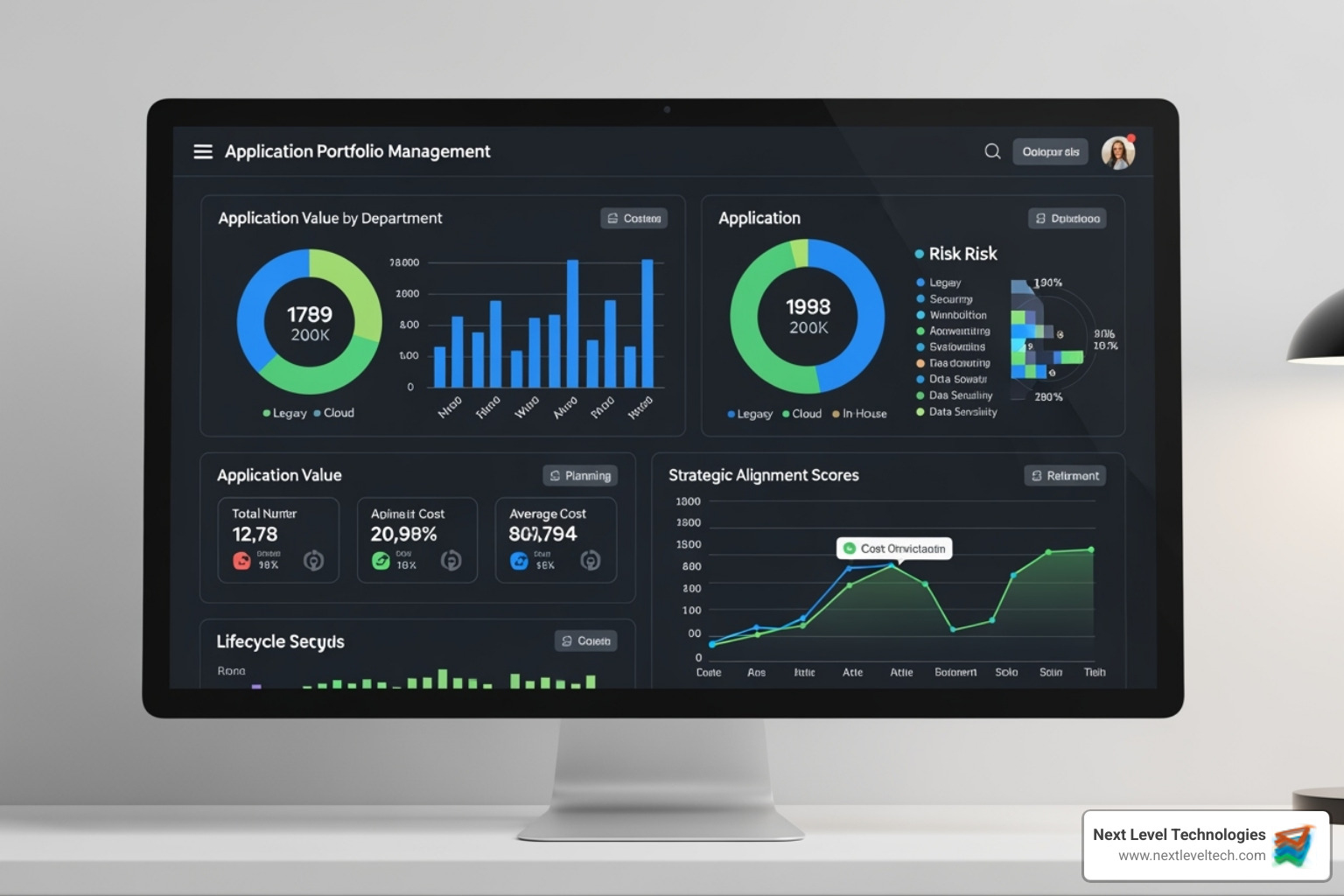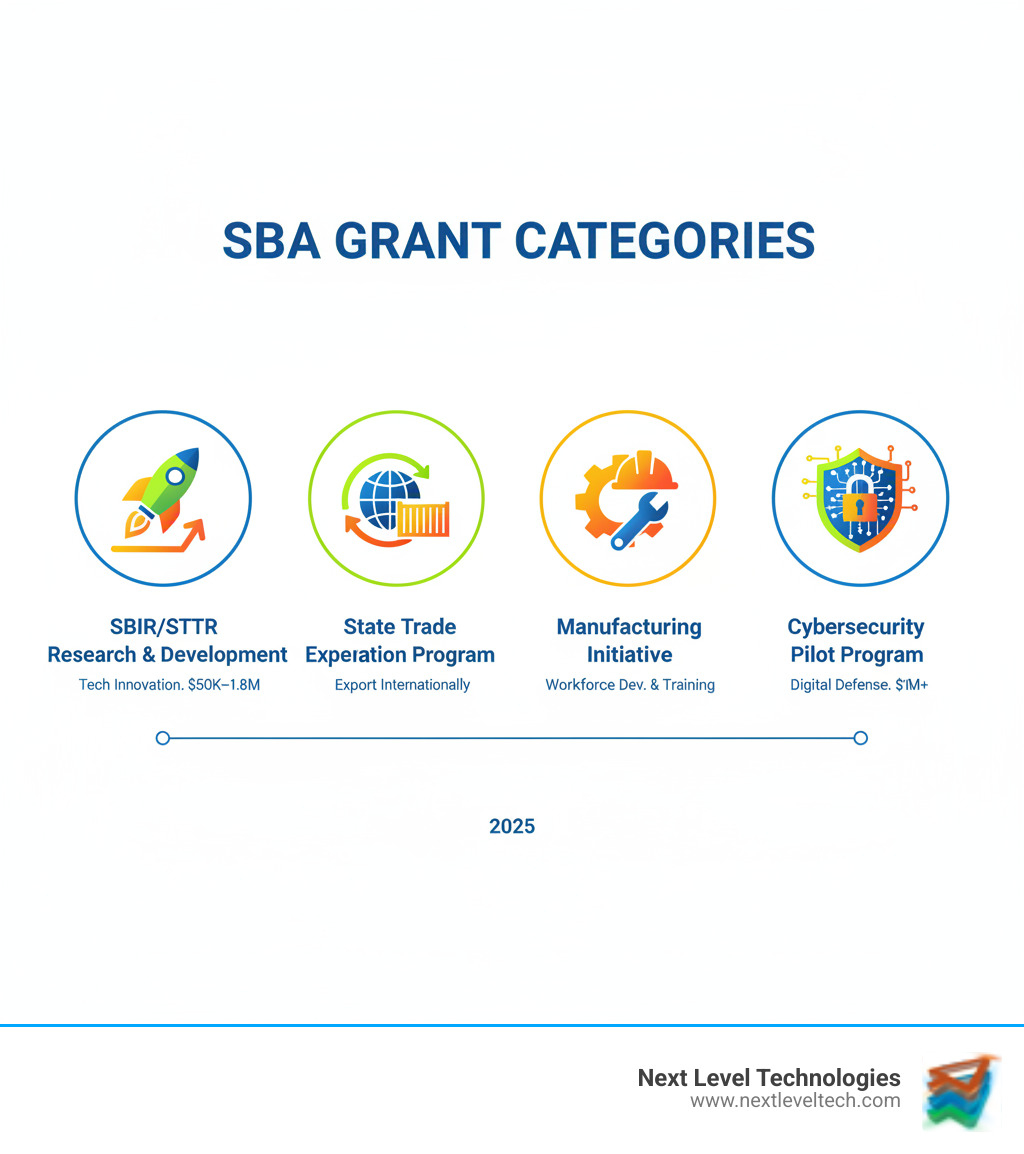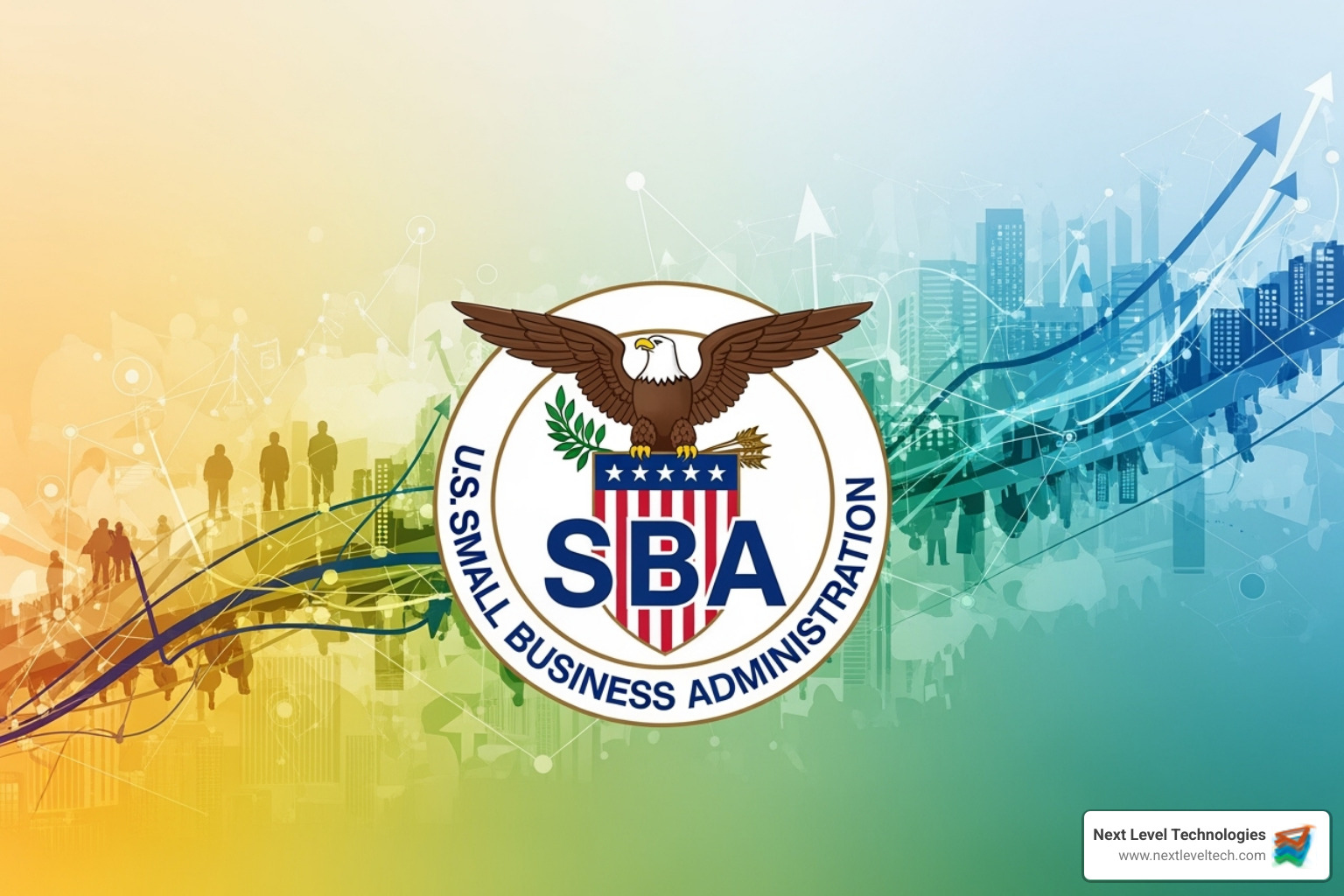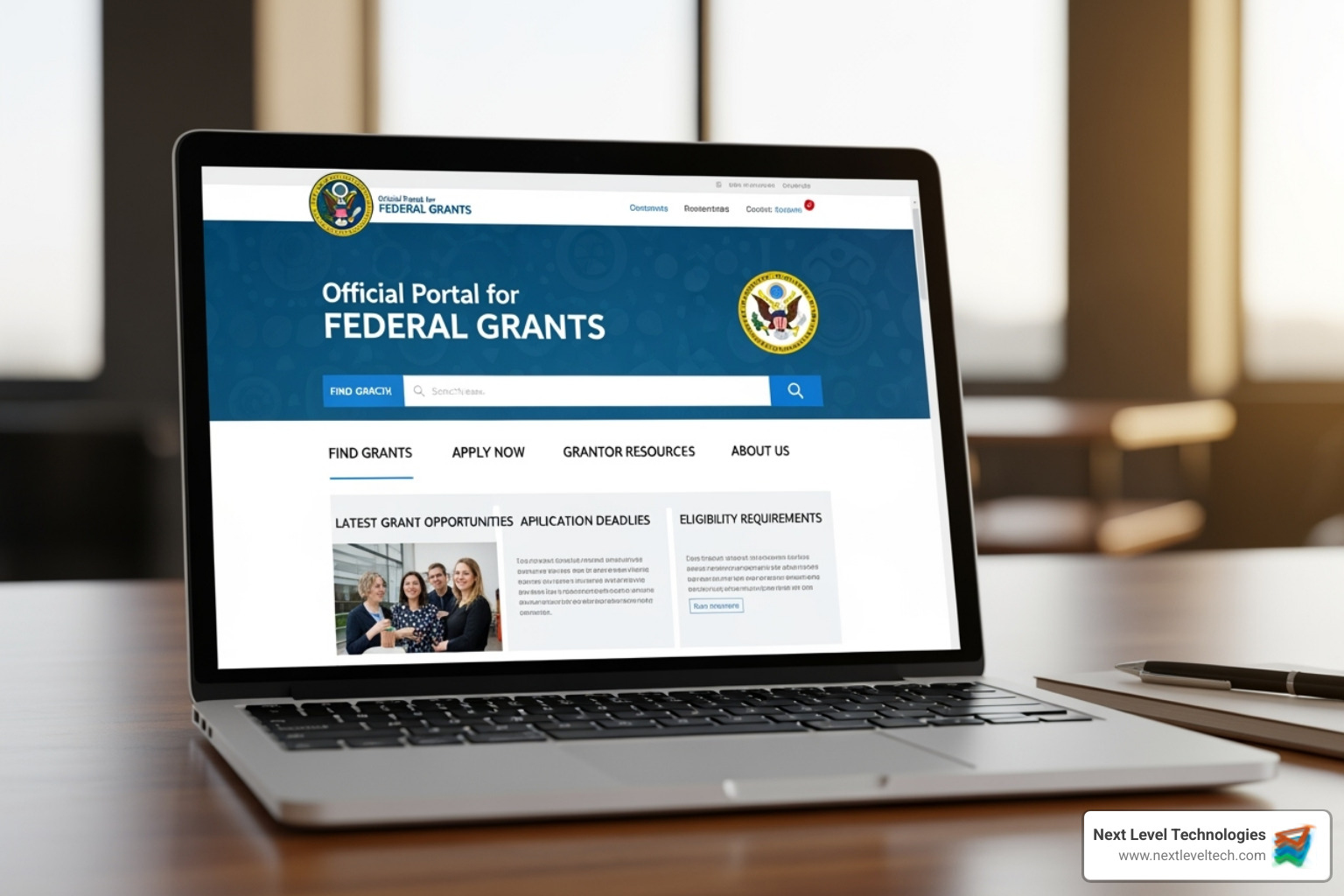Navigating SBA Grants: What Small Businesses Need to Know
October 23, 2025

Secure your business with expert business IT support. Boost efficiency, reduce downtime & achieve growth. Explore our guide now!
December 5, 2025

Master it application portfolio management. Optimize IT costs, reduce complexity, and align strategy for business growth.
December 4, 2025

Safeguard your business. Master secure data access with expert strategies, modern tech, and training to protect critical data.
December 3, 2025
October 23, 2025
Grant SBA programs are often misunderstood by small business owners who think the government hands out free money for starting businesses. The truth is very different - and much more specific.
Quick Answer for SBA Grant Seekers:
The Small Business Administration helps Americans start, build, and grow businesses - but not through the startup grants many entrepreneurs expect to find. Instead, the SBA provides grants to nonprofits, Resource Partners, and educational organizations to support entrepreneurship through counseling and training programs.
The reality check: There are no federal grants for starting a business. The SBA's limited grant programs focus on scientific research, community promotion of entrepreneurship, and specialized areas like cybersecurity and manufacturing.
For businesses in Ohio and West Virginia, this means understanding which programs actually apply to your situation. Manufacturing companies might qualify for workforce development grants, while tech startups doing research and development could access the SBIR/STTR programs worth up to $1.8 million.
The cost of cybercrime against small businesses reached $2.9 billion in 2023, with 88% of small business owners feeling vulnerable to cyberattacks. This has made cybersecurity grants increasingly important for building the secure infrastructure needed to compete in today's digital economy.
I'm Steve Payerle, President of Next Level Technologies, and I've helped hundreds of small businesses in Columbus, Ohio and Charleston, WV build the secure technology foundations needed to qualify for and manage grant SBA programs. Through my experience supporting businesses pursuing federal funding, I've seen how proper IT infrastructure becomes critical when applying for competitive grants like SBIR/STTR programs.

The Small Business Administration might be one of the most misunderstood government agencies out there. When entrepreneurs hear "SBA," dollar signs often flash in their eyes, and they immediately start dreaming about free grant SBA money to launch their dream business. I hate to be the bearer of bad news, but that's not quite how it works.

The SBA's mission is actually pretty straightforward: "aid, counsel, assist, and protect the interests of small business concerns, to preserve free competitive enterprise, and to maintain and strengthen the overall economy of the nation." In plain English, they're here to help Americans start, build, and grow businesses. They're like the ultimate cheerleader for small business owners.
But here's the reality check that trips up so many hopeful entrepreneurs: the SBA does not hand out grants for starting or expanding general businesses. I can't say this loudly enough because it's such a common misconception. There's no magical federal grant waiting for you to open that bakery, launch your consulting practice, or start your landscaping company.
Instead, the SBA takes a different approach. They primarily give grants to nonprofits, educational organizations, and Resource Partners like Small Business Development Centers and Women's Business Centers. These organizations then use that funding to provide counseling, training, and technical assistance to entrepreneurs like you. So while you might not get direct cash, you can definitely benefit from the programs these grants fund.
Think of it this way: the SBA funds the infrastructure that supports small businesses rather than funding the businesses themselves. It's like they're building the roads instead of giving you the car.
For businesses in rural areas (and we see plenty of these in Ohio and West Virginia), the SBA does offer some specialized support through SBA financing options for rural businesses. These programs recognize that running a business in smaller communities comes with unique challenges that urban entrepreneurs might never face.
The SBA also provides extensive counseling and training programs that can be incredibly valuable. From business plan development to marketing strategies and financial management, these resources can save you thousands of dollars in consulting fees.
This is where things get really interesting, and honestly, where most small business owners should be focusing their attention. While grant SBA opportunities are limited and highly specific, SBA loan programs are robust and designed exactly for businesses like yours.
Here's how it actually works: the SBA doesn't usually lend money directly to businesses. Instead, they act as a guarantor for loans made by regular banks and credit unions. Think of the SBA as your co-signer with excellent credit. This guarantee makes lenders much more comfortable lending to small businesses because the SBA reduces their risk significantly.
These SBA-guaranteed loans come in several flavors. The popular 7(a) Loan Program works great for working capital and equipment purchases. The 504 Loan Program is perfect for real estate and major equipment. Microloans help with smaller funding needs. Each program has different terms and purposes, but they all share that crucial SBA backing.
The SBA even makes it easier to find these lenders through their Lender Match program. Instead of calling dozens of banks hoping someone will talk to you, Lender Match connects you with participating financial institutions that are actually interested in making SBA loans.
When disasters strike (and we've seen our share in both Ohio and West Virginia), the SBA steps up with disaster assistance loans. These low-interest loans help businesses and homeowners rebuild after federally declared disasters. The SBA also offers surety bonds for businesses bidding on contracts, providing that extra credibility contractors often need.
The fundamental difference between loans and grants is simple: loans must be repaid, grants don't. But don't let that scare you away from loans. SBA-guaranteed loans often come with better terms, lower interest rates, and longer repayment periods than conventional business loans.
For businesses pursuing any type of funding, having solid technology infrastructure becomes crucial. Whether you're applying for loans or managing the compliance requirements of specialized grants, you need reliable systems. That's why we often recommend our clients explore IT Solutions for Startups early in their journey. A strong IT foundation not only makes you more attractive to lenders but also positions you to handle the rigorous demands of any federal funding program you might eventually pursue.
Here's where things get exciting for tech-focused entrepreneurs: the Small Business Innovation Research (SBIR) and Small Business Technology Transfer (STTR) programs. These aren't your typical grant SBA opportunities - they're specifically designed to turn scientific breakthroughs into real-world solutions.
These programs earn their nickname "America's Seed Fund" because they plant the seeds of innovation across the country. The federal government sets aside a portion of its massive R&D budget specifically for small businesses that can tackle complex technological challenges. Think of it as Uncle Sam betting on the little guy to solve big problems.
What makes SBIR and STTR grants so appealing is the non-dilutive funding aspect. Unlike venture capital deals where you give up ownership stakes, these grants let you keep 100% of your equity and intellectual property. You're not trading pieces of your company for funding - you're getting paid to innovate while staying in complete control.
The magic happens through a three-phase structure that takes your idea from concept to commercialization. Phase I gives you $50,000 to $275,000 over 6-12 months to prove your concept actually works. If you succeed, Phase II opens the door to much larger funding - anywhere from $750,000 to $1.8 million over two years to really develop your technology.
Phase III is where the rubber meets the road. While not directly funded by these programs, it's all about taking your breakthrough to market using private investment or other federal contracts. The goal is always commercialization - turning your research into products that solve real-world problems.
From our experience working with tech companies in Columbus and Charleston, the businesses that succeed in these programs usually have rock-solid IT infrastructure from day one. Managing federal grants requires serious data security and collaboration capabilities that many startups underestimate. For more details about these opportunities, check out the Small Business Innovation Research Program website.
Not every business can walk through this door - the eligibility requirements are pretty specific, and for good reason. The government wants to make sure these funds go to companies that can actually deliver breakthrough innovations.
Your business needs to be a for-profit U.S. small business with 500 or fewer employees, including any affiliates. This isn't just about size - you need to be organized for profit and physically located in the United States. No exceptions on this one.
The technology development requirement is where many businesses get filtered out. These grants aren't for improving existing products or general business operations. You need to be working on genuine scientific or technical innovation that aligns with what federal agencies actually need. Think cutting-edge research that could revolutionize an industry, not incremental improvements.
Commercialization potential is the third leg of the stool. While the research matters, the ultimate goal is bringing viable products or services to market. Your application needs to show a clear path from lab bench to customer hands. The government isn't funding pure academic research - they want solutions that can actually be sold.
The STTR program adds one more requirement: you must partner with a U.S. research institution like a university or federal lab. This creates powerful partnerships that combine academic expertise with business agility. We've seen some incredible collaborations emerge from this requirement, especially in our region where universities like Ohio State and West Virginia University offer world-class research facilities.
These programs exist to stimulate technological innovation while meeting federal R&D objectives. The government gets breakthrough solutions to complex problems, and small businesses get the funding to retain their intellectual property and build something amazing. It's a win-win that has launched countless successful companies across Ohio, West Virginia, and beyond.
While SBIR/STTR programs get most of the attention, the SBA runs several other grant SBA programs that serve specific purposes. Don't get your hopes up for general startup funding – these grants are laser-focused on particular industries and national priorities.

These targeted programs tackle real economic challenges. They're designed to fill gaps where private funding falls short, whether that's training workers for advanced manufacturing or helping small businesses defend against cyber threats. The scope remains narrow by design – think of them as surgical strikes rather than broad support.
Each program addresses a specific piece of the economic puzzle. Manufacturing grants strengthen our domestic supply chain. Export programs help businesses reach global markets. Cybersecurity grants protect against increasingly sophisticated threats. Together, they create a stronger foundation for American small business.
American manufacturing matters, and the SBA knows it. Through the Made in America Manufacturing Initiative, the agency provides grants to organizations that train and develop manufacturing workforces. These aren't direct payments to manufacturers – instead, they fund the training programs that help your employees master new technologies and processes.
If you're running a manufacturing operation in Ohio or West Virginia, these workforce development programs could transform your team's capabilities. The grants flow through intermediary organizations, but the benefits reach your shop floor in the form of better-trained workers and improved efficiency.
The State Trade Expansion Program (STEP) takes a different approach to supporting business growth. Rather than funding individual companies directly, STEP provides financial awards to state governments. Your state then uses these funds to help small businesses break into international markets.
This might include subsidizing your participation in overseas trade shows, funding market research for potential exports, or providing training on international business practices. For businesses in Columbus or Charleston looking to expand beyond U.S. borders, STEP represents a gateway to global opportunities – you just need to work through your state's economic development office.
Here's a sobering reality: 88% of small business owners feel vulnerable to cyberattacks, and they're right to be concerned. Cybercrime cost small businesses $2.9 billion in 2023 alone. These aren't abstract statistics – they represent real businesses that lost money, data, and customer trust to criminals.
The SBA's Cybersecurity for Small Businesses Pilot Program addresses this critical vulnerability. Like other grant SBA programs, it doesn't hand money directly to businesses. Instead, it provides funding to state agencies that deliver cybersecurity training, counseling, and services to small businesses and startups.
The program has distributed nearly $9 million since 2022, with another $3 million announced recently. This funding helps state agencies provide custom cybersecurity assessments, training programs, and implementation support – exactly what small businesses need but often can't afford on their own.
At Next Level Technologies, we've seen how cyberattacks can devastate unprepared businesses. Our team's extensive cybersecurity training and technical experience helps businesses in Columbus, OH, and Charleston, WV, build the defenses they need before threats strike. Whether you're pursuing federal grants or simply want to protect your operations, robust cybersecurity isn't optional anymore.
Strong IT infrastructure becomes even more critical if you're applying for competitive programs like SBIR grants, where you'll be handling sensitive research data and collaborating with federal agencies. Our comprehensive IT Support for Small Businesses ensures you have the secure, reliable foundation needed to compete for and manage federal funding successfully.
Finding legitimate grant SBA opportunities requires knowing exactly where to look and having the patience to steer federal bureaucracy. The good news? Once you understand the system, it becomes much more manageable.

Your starting point should always be the official Grants.gov portal. This is the federal government's central hub for all discretionary grant opportunities, including every legitimate SBA grant program. Think of it as the Amazon of federal grants - if it's not listed here, it's either not real or not worth your time.
When searching for SBA opportunities, use specific keywords like "Small Business Administration," "SBIR," or "STTR" rather than generic terms. The search function can be finicky, but setting up email alerts for your specific criteria will save you hours of manual checking. Trust me, you don't want to miss a funding cycle because you forgot to check the website.
Understanding eligibility requirements is where many businesses stumble. Each grant program has its own specific criteria covering everything from business size and location to industry focus and ownership demographics. Read these requirements twice - then read them again. There's nothing more frustrating than spending weeks on an application only to find you weren't eligible in the first place.
Here's where I need to give you a serious warning: grant SBA scams are everywhere. If someone contacts you promising easy federal grants for a small upfront fee, run the other way. The federal government never charges application fees for grants, and they don't send unsolicited emails promising funding.
Legitimate SBA communications only come from email addresses ending in "@sba.gov." Official websites always use the .gov domain and show a lock icon in your browser's address bar. If you encounter anything suspicious or believe you've been targeted by fraud, report it immediately to the OIG Hotline. Protecting your business from scammers is just as important as securing legitimate funding.
Every grant SBA program has its own unique eligibility requirements detailed in the funding opportunity announcement. These documents might seem dense, but they're your roadmap to understanding exactly what the government is looking for in successful applicants.
The SBA has been working hard to expand access to funding for entrepreneurs who've faced barriers in the past. One significant area of progress involves support for returning citizens - individuals with prior criminal history records who want to start businesses.
This matters more than you might think. One in three American adults has a criminal record, and formerly incarcerated people face an unemployment rate of 27%. The SBA recognized that entrepreneurship could be a powerful pathway to economic stability for these individuals, especially since there's no evidence that people with criminal history pose greater risk of loan default.
Recent proposed rule changes aim to standardize eligibility across SBA capital programs and remove unnecessary barriers. While restrictions remain for those currently incarcerated or who have defrauded the government, the reforms seek to give qualified entrepreneurs a fair shot at building successful businesses.
For businesses in Columbus, Ohio, and Charleston, West Virginia, these expanded access initiatives represent real opportunities. Whether you're a returning citizen looking to start fresh or an existing business owner seeking growth capital, understanding your eligibility options is the first step toward securing funding.
The application process itself can be complex, especially for research-focused grants like SBIR/STTR programs. These applications often require detailed technical documentation, financial projections, and proof of your business's technological capabilities. Having robust IT infrastructure and cybersecurity measures in place isn't just good business practice - it's often a requirement for managing the sensitive data and collaboration these grants involve.
Let's wrap up what we've learned about grant SBA opportunities and how they can realistically fit into your business strategy.
The biggest takeaway? Those general startup grants you've been searching for simply don't exist. The SBA doesn't hand out free money to launch coffee shops or consulting firms. Instead, their grant programs are laser-focused on specific national priorities that drive innovation and economic growth.
Your real opportunities lie in three main areas: cutting-edge research and development through SBIR and STTR programs, manufacturing workforce development, international market expansion through state export programs, and increasingly important cybersecurity strengthening initiatives. These aren't consolation prizes - they're substantial funding opportunities that can transform the right businesses.
The SBIR and STTR programs alone offer up to $1.8 million in non-dilutive funding, meaning you keep your equity and intellectual property. That's serious money for serious innovation.
But here's something we've learned from working with businesses pursuing federal funding: success isn't just about having a great idea. You need rock-solid infrastructure to compete for and manage these grants. The application process is rigorous, the reporting requirements are extensive, and the data security standards are stringent.
For technology-focused grants especially, your IT foundation becomes mission-critical. You're not just managing everyday business operations anymore - you're handling sensitive research data, collaborating with federal agencies, maintaining strict compliance standards, and protecting valuable intellectual property from cyber threats.
This is where many promising applications fall short. They have brilliant concepts but lack the technological backbone to execute them properly. In our experience helping businesses in Columbus, Ohio and Charleston, West Virginia, we've seen how proper IT infrastructure can make or break a grant application.
That's exactly why Next Level Technologies provides expert Managed IT Services and IT Support specifically designed for businesses pursuing federal funding. Our team brings extensive technical experience and cybersecurity training to build the secure, reliable technology foundation that grant reviewers expect to see.
Whether you're developing breakthrough research, strengthening your cybersecurity defenses, or expanding into international markets, having the right technology partner can mean the difference between grant SBA success and missed opportunities. We're here to help you build that foundation and compete effectively in today's digital economy.
Secure your business with expert business IT support. Boost efficiency, reduce downtime & achieve growth. Explore our guide now!
December 5, 2025
Master it application portfolio management. Optimize IT costs, reduce complexity, and align strategy for business growth.
December 4, 2025
Next Level Technologies was founded to provide a better alternative to traditional computer repair and ‘break/fix’ services. Headquartered in Columbus, Ohio since 2009, the company has been helping it’s clients transform their organizations through smart, efficient, and surprisingly cost-effective IT solutions.
